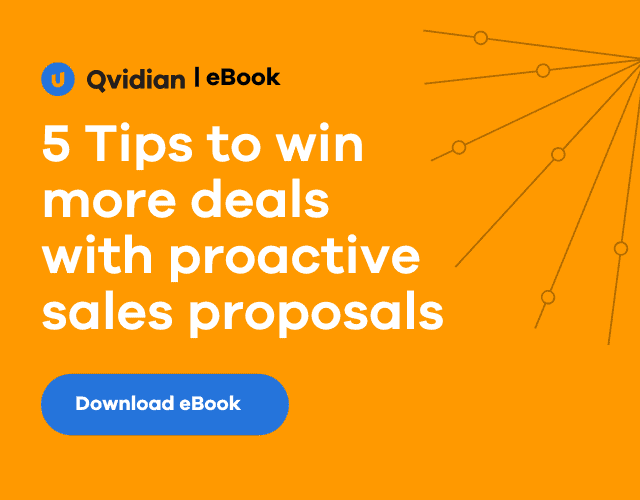Sure, you might be responding to all relevant requests for proposals (RFPs) well before their deadlines. You might even have the best close rates in your industry. But are you truly making the biggest impact with your team’s limited resources? It’s no secret that RFPs are getting more complex, and response and sales teams are under constant pressure to increase efficiency and produce more proactive sales proposals with the same resources.
Often, this means that organizations focus on reactive responses to RFPs while overlooking proactive (unsolicited) sales proposals. When considering a proactive approach to proposals, it’s essential to consider how to best invest your valuable time and resources. After all, who wants to chase opportunities that might not even exist? That’s why careful planning is crucial to launching a successful and lucrative proactive proposal strategy. By taking the guesswork out of the equation, a proactive sales proposals strategy can be your secret weapon to increase wins. Let’s get started by taking a look at three tips to keep in mind as you begin to develop your approach to proactive proposals.
Tip #1: Listen for relevant sales triggers
There are a handful of sales triggers to watch out for that could be a sign that it’s time to target a new prospect organization. Keep an eye out for these triggers, as they frequently indicate a pivot in company direction, an increase in budget, or an immediate need for change or expansion. A few examples of sales triggers that can help you identify organizations that need your products and services include:
- Funding announcements
- Leadership changes
- Increased brand presence
- New product launches
Press releases, blog entries, and word of mouth are great ways to hear about these triggers. If you don’t see a sales trigger, it doesn’t necessarily mean the organization isn’t ready to purchase something new, but it’s best to dedicate your time to the most promising opportunities instead of chasing after long shots.
Tip #2: Qualify all proposal opportunities
Sales and proposal teams never have enough time. Still, teams spend thousands of hours each year writing proactive sales proposals for opportunities they are destined not to win. With a proactive proposal strategy, response deadlines aren’t looming, so your team can invest the time upfront to research prospective organizations and qualify every deal. To qualify deals, be sure to:
- Compare prospective companies to your best customers
- Decide if your capabilities match the prospect’s needs
- Uncover pain points that your products address
- Determine if the prospect is motivated to act
Keep both short-term and long-term success in mind. Closing new business is great. Obviously, without revenue, your company will fail. The catch is, you don’t want to win deals that will cause headaches down the line. A poorly fitting customer may cost the company by constantly engaging support or even bad-mouthing your organization. The last thing you want is a negative customer driving away better-fitting customers and prospects.
Tip #3: Avoid reinventing the wheel with your proactive sales proposals
Creating a truly persuasive sales proposal means tailoring every section to your prospects’ needs. Old proposal writing processes make this nearly impossible. After all, your sales team is full of expert sellers, not necessarily expert writers. Even if you know tailoring proposals is the way to go, how can you find the resources to make it a reality? Proposal management software is the trick to not starting every proposal from scratch. With the right proposal management software, you can:
- Personalize, localize, and customize content at scale
- Centralize your library of accurate, up-to-date content
- Secure your environment
- Uphold compliance and build audit trails
- Integrate with critical systems (like your Salesforce CRM)
With proposal management software, you can pull together first drafts of your proactive sales proposals in minutes. From that base of approved, accurate content, you can then refine and customize the proposal to match your prospect. That’s a whole lot easier than staring at a blank page. When the proposal is ready, final formatting is as easy as clicking a button to apply your company’s pre-approved branding.
You don’t need to be a super-human to create proactive sales proposals
You don’t have to have super-human powers to generate out-of-this-world, proactive sales proposals. With forward-thinking strategic processes, a flexible mindset, and best-of-breed proposal management software, you can leave the competition in the dust. By following these tips, your team can create a solid foundation for a proactive approach to proposals. If you’re hungry for more tips, take a minute to check out our complete eBook.


